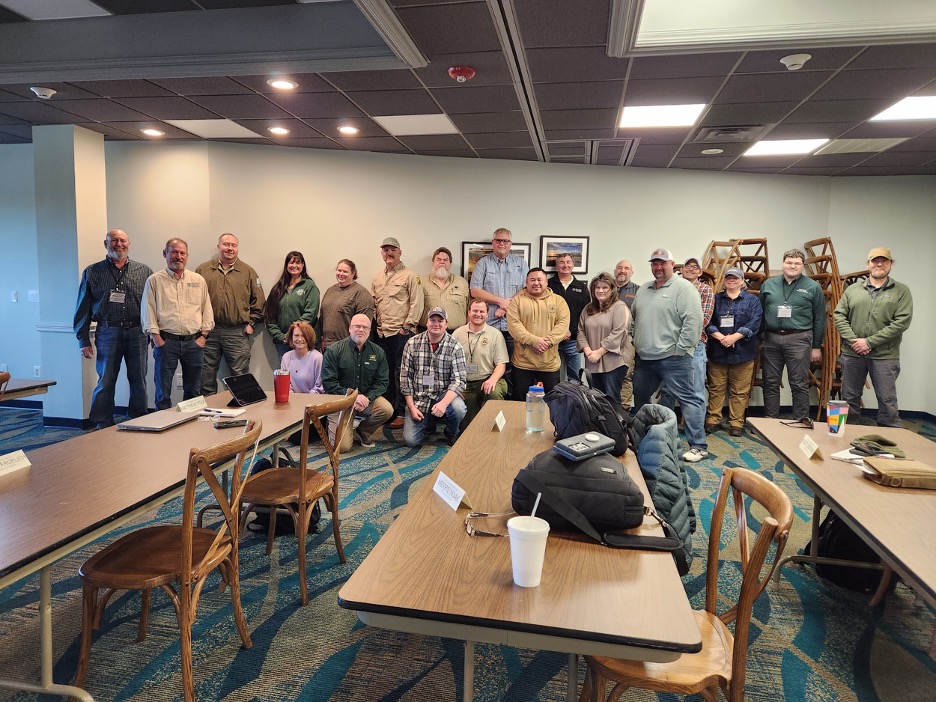Updates & Blog
Volunteer Fire Assistance Coordinators Share Best Practices

In mid-December, Volunteer Fire Assistance (VFA) state coordinators from across the U.S. Forest Service Region 8 met for the first time since the program began. Randy Kearney of the North Carolina Forest Service, hosted colleagues as well as representatives from the Southern Group of State Foresters and U.S. Forest Service to share best practices, view demonstrations, and establish a network with an aim to increase the efficiency of this important program for rural volunteer fire departments.
Annually, congressionally-appropriated VFA funds are awarded to states. The purpose of The VFA program is to provide federal financial, technical and other assistance to State Foresters and other appropriate officials to organize, train and equip fire departments in rural communities and areas to prevent and suppress wildfires. VFA funds allow rural volunteer fire departments access to critical wildland fire equipment, training and personal protective equipment (PPE). This specialized equipment is often different than what is needed for fighting structural fires. State forestry agencies are responsible for reviewing requests and prioritizing the federal funds. Local fire departments are often the first response to wildfire in rural areas and the VFA program can give them access to funds that will keep their tools and training new and sharp.
“There are fifty states; fifty ways to do it,” says Kearney. “There are a lot of new coordinators [across the region]…we wanted to get people together, share ideas and success stories.” At the meeting, Kearney demonstrated the North Carolina Forest Service’s new digital system that streamlined the state’s VFA process. “North Carolina has 1,300 fire departments and in the past, each needed a seven-page application form, ” Kearney says, recalling the former grant process. “We can now get the approvals done in one day, whereas it took weeks before.” While individual grants are relatively small, often $5,000 or less, each state might receive several hundred of them.
When asked why it was important to meet in person, Kearney responded: “I’m ‘old school.’” But he explained that many attendees were also excited to attend in person: “Many much prefer face-to-face. They get a lot more out of it.” During the two day event, state coordinators had the opportunity to receive and exchange program information and build relationships. Most states have just one person assigned to run their VFA program, and this big responsibility often represents just one in a long list of high-priority job requirements. By sharing information and best practices with other coordinators, each state can improve efficiency to provide better service to rural volunteer fire departments. This can also expand the coordinators’ daily bandwidth, improving their level of service across the board. In Kearney’s case, this means more time to meet with individual departments or fire associations as the state Fire Department Coordinator or serving on the state fire staff.
As an initial meeting, it worked well to establish a cooperative atmosphere and demonstrate the need to find opportunities to meet more regularly. Future meetings may be in-person or virtual, but at the end of the day, it’s all about the group’s shared goal of improving service to rural volunteer fire departments who are often the first line of defense in protecting communities.